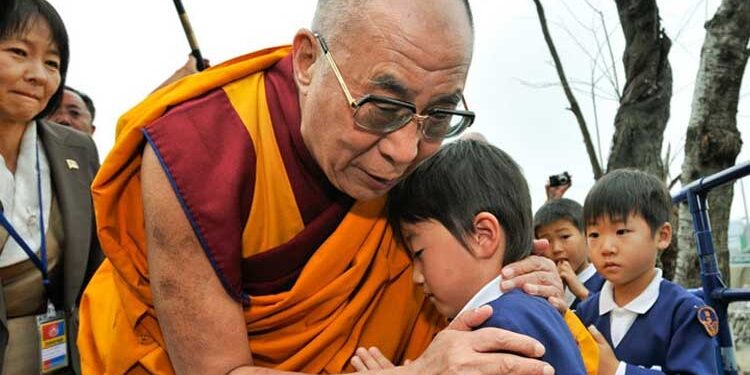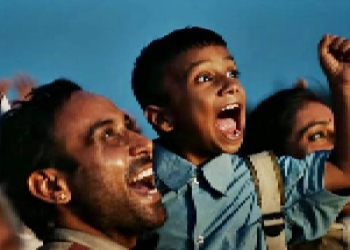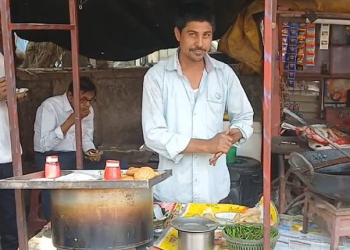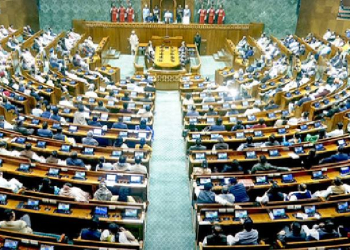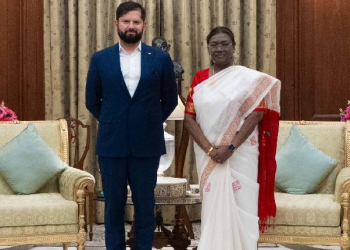Dharamsala: Globally acclaimed Tibetan spiritual leader, the Dalai Lama, on Monday apologised to the boy and his family, as well as his many friends across the world, for the hurt his action may have caused.
“His Holiness often teases people he meets in an innocent and playful way, even in public and before cameras. He regrets the incident,” an official statement quoting the Dalai Lama said.
A video clip has been circulating that shows a recent meeting when the young boy asked the Dalai Lama “if he could give him a hug”.
The Dalai Lama then asked the boy to “suck his tongue” in front of a big audience and the child’s parents.
The video has created a worldwide furore.
But sympathisers of the holy monk’s believe His Holiness shares a special bond with the young minds. For him, the children of this generation are the main protector of the world, a conveyor of peace.
“My advice or rather appeal to the children is to focus on reducing this social disparity. Whether one is a socialist or not, one must think for the greater good of humanity,” the Dalai Lama was quoted as saying while speaking virtually recently at the Fair Share for Children Summit.
The sympathisers say as per the Tibetan tradition sticking out one’s tongue is a sign of respect or agreement and was often used as a greeting in traditional Tibetan culture.
According to Tibetan folklore, a cruel ninth-century Tibetan king had a black tongue, so people stick out their tongues to show that they are not like him.
This custom has a long history. In the movie, ‘Seven Years in Tibet’, Hollywood actor Brad Pitt’s character encounters a group of Tibetans who all at once stick out their tongues at him.
The Dalai Lama comforting a young survivor during his visit to the tsunami devastated region of Sendai in Japan in November 2011 reminds his saying, “since a child cannot survive without the care of others, love is its most important nourishment”, remarked a close aide of the Dalai Lama, while clarifying regarding misinformation spread on the social media.
He told IANS that often the globetrotting holy monk is seen blessing expectant mothers by putting his hand over her baby bump.
According to a post on the website of Tibet Rights Collective, a Delhi-based advocacy and policy research group, the Dalai Lama has often pitched for incorporating ‘karuna’ or compassion as a subject in the modern education system in India, saying it should be taught to students “not as a religious subject”, but as a way to foster inner peace and learn greater human values.
Published in 2019, the children’s picture book ‘Seeds of Compassion: Lessons from the Life’ by the Dalai Lama addresses children directly and shares lessons of love and compassion, told through stories of his own childhood and talks about his mother, his first teacher of compassion.
His Holiness is of the opinion that if human beings are to be happier, education must be combined with warm-heartedness.
Another book using childhood stories of the Dalai Lama and Archbishop Desmond Tutu was published in 2022 to show young readers how to find joy even in hard times.
Random House Children’s Books published a picture book adaptation of the international bestseller, ‘The Book of Joy’.
In ‘The Little Book of Joy’, the two spiritual masters, along with collaborators Rachel Neumann and Douglas Abrams, tell a simple story, vibrantly brought to life by New York Times bestselling illustrator Rafael Lopez, about the joy every child carries inside them — even when it sometimes hides — and how they can find it, keep it close, and grow it by sharing it with the world.
(IANS)


